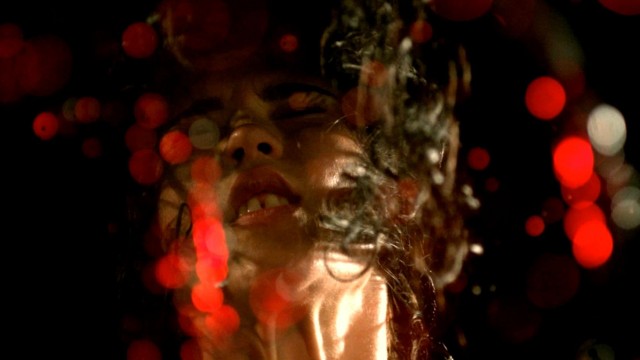In the follow-up to 2009’s Amer, Helene Cattet and Bruno Forzani created another psychedelic cinescape of sensory overload. The Strange Colour of Your Body’s Tears is a 100 minute avant-garde experiment that tests the boundaries of storytelling and film itself. By using the visual and aural overload cues of 1970s giallo, Cattet and Forzani have concocted a singularly unique film.
Dan Kristenssen is returning home to his gorgeous apartment after a week away and discovers his wife has gone missing. Adding to the mystery, the door was chained from the inside. While investigating the disappearance, Dan discovers that his apartment building has plenty of mysteries and mysterious tenants.
But, besides a couple of twists that happen midway through, much of the movie’s plot and meaning is kept vague to the audience. Unlike with Amer, Cattet and Forzani aren’t intent on creating a simply plotted story that captures what it means to be a young woman blossoming. This time around, they’re exploring a general Giallo-inspired plot, but the complications upon complications means that The Strange Colour remains thematically and structurally vague.
Those looking for something direct or even coherent might be better served looking at different pastures. The Strange Colour isn’t going to provide you any direct answers. It isn’t going to give you an easy A-B-C plot that tells you something is the direct something is the direct something. It is a mood piece that intends to overpower the audience instead of making a coherent statement on its own.
However, The Strange Colour is excellent in creating atmospheres of a certain feeling. The atmosphere is moody and grotesque and psychedelic and overpowering in intensity. The overamping of sounds like leather rubbing against leather, doors creaking open, blood splattering, tile breaking, and even blades going *SHINNK* creates a sensory overload that pulls you in and pushes you out in a pulsing fashion.
The lack of coherence that’s conveyed through the atmosphere does point to a certain student film-esque quality. The atmosphere for atmosphere’s sake, the sound, the cinematography and the editing are all top notch, but the lack of purpose seems so amateur. There is a drilling re-use of an S&M scene involving a knife of at least 5-6 times where you kind of get the point and nothing new is revealed in any of the later repetitions. There are spinning kaleidoscopic reflections upon reflections of stained glass windows and geometric balconies and doorways that are neat to look at, but sometimes it is little more than “Look what I can do with After Effects!!”
The Strange Colour feels less like a final film and more like an experiment that will lead to the next film in Cattet and Forzani’s career. The film seems to be about the walls we build up between our self and our past. It explores our general abandoning of our history in order to deal with our present. By creating the sense of horror, Cattet and Forzani have made the exploration compelling. But, without saying anything new that hasn’t been said in other, more superior, films, The Strange Colour ends up being little more than a fun and amusing diversionary lark of an avant-garde film.
A version of this review originally appeared at The Other Films

